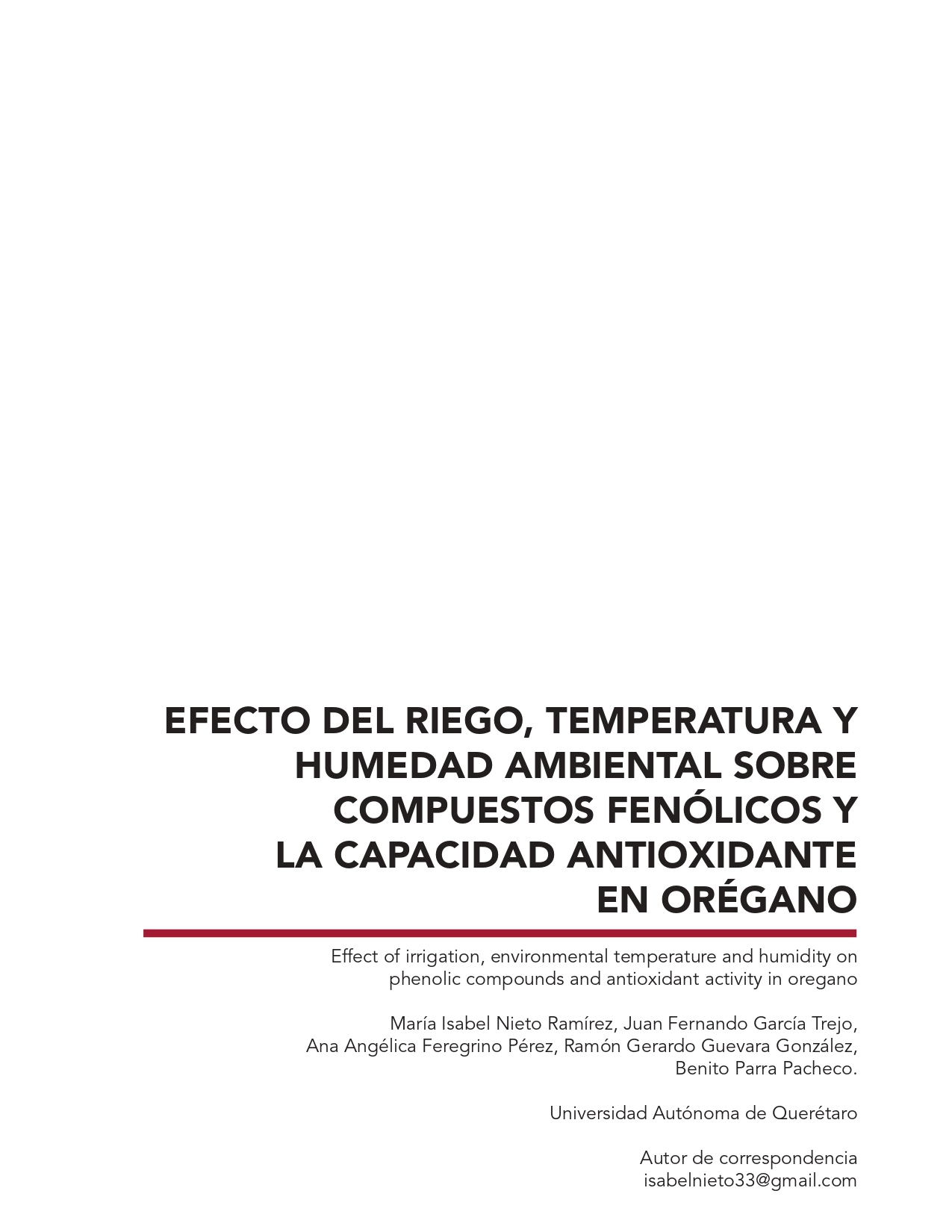Abstract
Oregano is a plant mainly used in traditional medicine as an antimicrobial and as a condiment in gastronomy. Secondary metabolites like phenols and flavonoids provide this plant with medicinal properties. The concentration of these compounds could be influenced by abiotic stress (culture conditions as irrigation, environmental temperature and humidity). In this work, irrigation, environmental temperature and humidity were compared with phenols, flavonoids and antioxidant activity production in oregano. The plants were bought and separated in two diffetent cultures; greenhouse and field crop, with 14 plants in each. Aditionally, each culture had two irrigations types, first, with fertilizer water and second aquaculture residual water. Also, ambient temperature and relative humidity were monitoried in each culture. Total phenols, flavonoids and antioxidant activity were determined by spectrophotometric methods. The highest phenols concentration was obtained in plants culture in green house at 22 to 17 °C, irrigated with aquaculture residual water. The highest flavonoids concentration was obtained in plants cultured in field crop at 45 to 11 °C, irrigated with aquaculture residual water. The highest antioxidant activity was found in plants cultured in greenhouse, irrigated with fertilized water. In conclusion, phenolic compound concentration increased in plants irrigated with aquaculture residual water. In addition, different environmental temperature and humidity affect phenolic compound concentrations in oregano.
This work is licensed under a Creative Commons Attribution-NonCommercial 4.0 International License.

